Located on Canongate, part of the southern section of the Royal Mile, Wedgwood is one of Edinburgh’s long-standing fine dining restaurants. For fourteen and a half years it has satisfied the ever-changing demands of a discerning clientele. The modest exterior belies a spacious air-conditioned dining room of 44 covers. Recently refurbished, the bright and stylish décor, pendant lighting and well-spaced tables provide a smart but informal setting.

Paul Wedgwood’s Modern Scottish cuisine has Asian influences, although less prominent than before, and exploits the foraged ingredients of land and sea. Spiced monkfish, cauliflower korma, pickled daikon and saffron pickled onions evidence the former. Woodruff in a broth accompanying salt-baked celeriac, sea vegetables garnishing a halibut dish, lavender flavouring a mallard breast, bramble in a salmon starter, sweet cicely in a vegetarian option, and wild mint ice cream clearly reflect his passion for wild food.
The cooking of meat and fish is precisely timed to maximise their inherent flavour. Vegetables are given equal attention to protein. Many dishes are multi-layered, showing invention tempered by restraint, being harmonious in composition and balanced in taste, texture and temperature. Saucing is carefully judged so as not to overwhelm the star ingredient. Both classical and contemporary techniques are employed demonstrating high levels of culinary skill. Menu descriptions are terse, listing the main ingredients but not indicating the cooking methods, giving a surprise to the diner. The presentation is clean and portions are generous.

Pricing is realistic but represents good value given the quality of the product and the skills and versatility on show. These are two reasons that help to explain Wedgwood’s longevity in an area saturated with restaurants
The main menu comprises five starters priced from £9.95 to £13.50; five mains from £22.95 to £28.95; and four desserts all at £8.95. A cheese plate is also available at £10.95. A six-course tasting menu – “A Wee Tour of Scotland” – priced £60 includes some dishes from the carte. There is also a vegetarian menu at £55 and a popular two or three-course set lunch at £20/£25.
Fine Dining Guide visited on a weekday lunchtime when only the set menu is available. An acid test for any high-end restaurant is that the standard of cooking, albeit usually of more humble ingredients with a limited choice, should be the same here as for the other menus. In this respect, Wedgwood did not disappoint. With three options in each course, including vegetarian dishes, most preferences would be satisfied
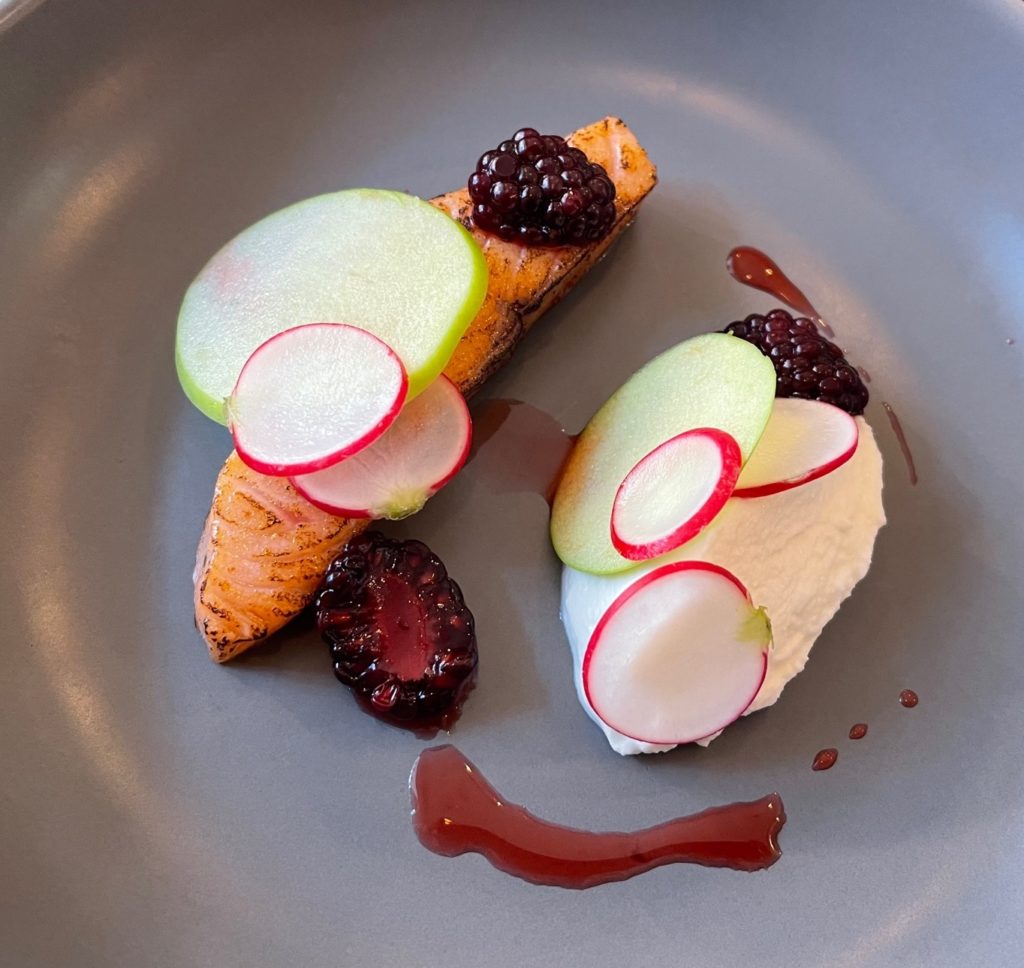
A starter of scorched salmon was accurately judged to retain the flavour of the rich buttery flesh. Goats’ curd, with its mild tanginess, worked well as a foil to the oily fish. Freshness was provided by bramble and bramble oil which added sweetness, apple giving a crisp texture and gentle acidic note, and radish adding a spicy edge.

Another starter of venison and pancetta terrine was moist and well-seasoned. Studded with pistachios, which gave sweetness and a contrasting texture, it was balanced by pickled daikon and beetroot, giving acidity and an earthy note. Dressed with garlic crumb, this was a visually stunning dish.

Gently spiced monkfish tail was carefully rendered, capturing the mild, sweet flavour of the dense, meaty flesh. Perched on a bed of crushed potato and braised fennel, and dressed with sea herbs, the dish was bought together by a full flavoured but light crab bisque.
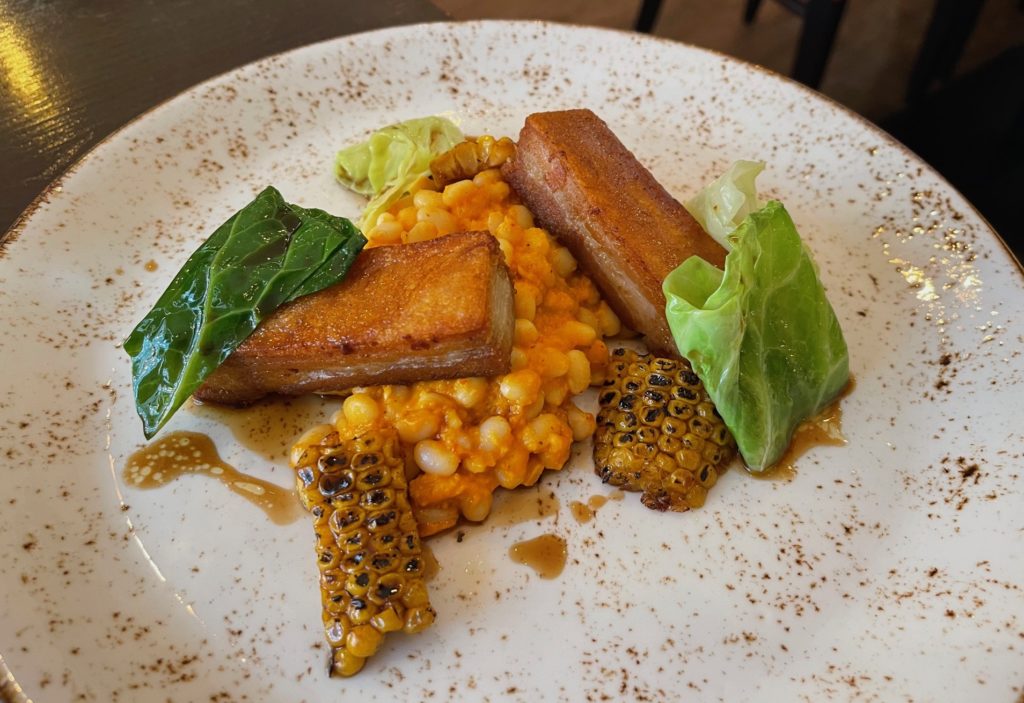
Another main course featured two thick slices of belly pork cooked by the confit method. So often used with duck, it was successfully employed here, resulting in meltingly soft meat, full of porcine richness. White beans in a well-reduced romesco sauce of tomatoes, peppers and almonds proved a robust, hearty accompaniment. Charred sweetcorn added a smoky lift and hispi cabbage gave an element of freshness the dish needed.
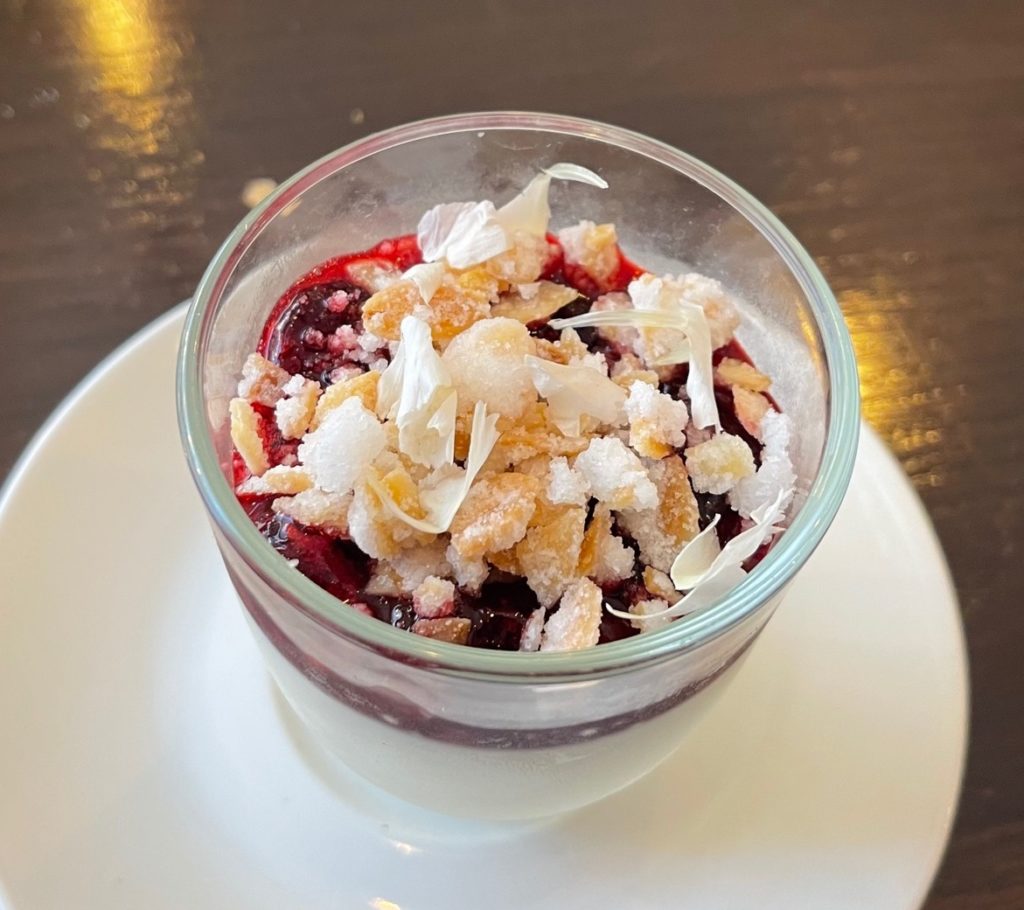
For dessert, buttermilk and lemon thyme panna cotta served in a glass cup, had the correct degree of wobble and a well-balanced herbal note. Blackcurrant compote gave a contrasting tartness to the cream, while crushed almonds added a pleasing textural flourish.
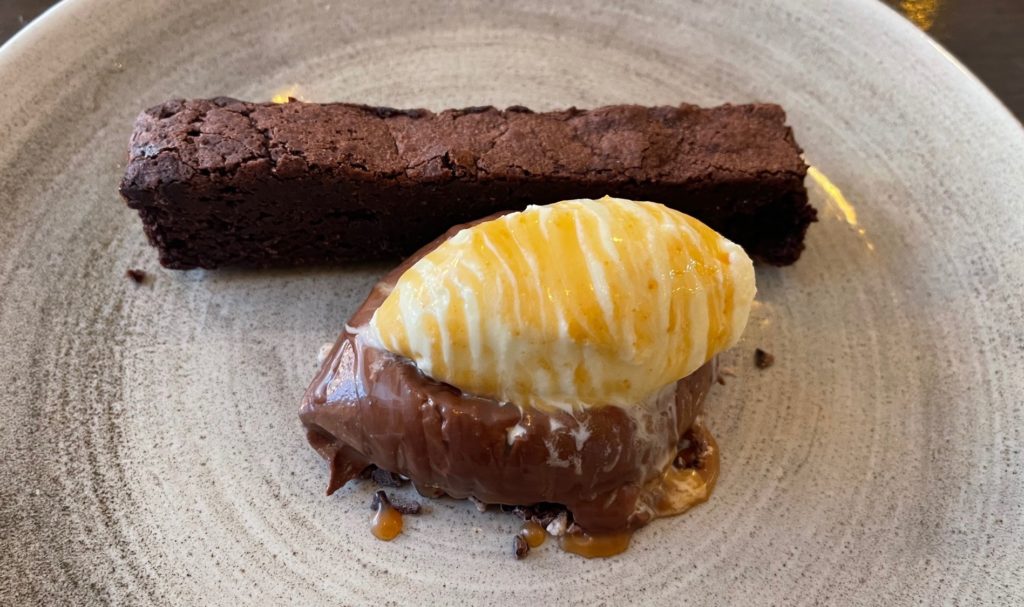
The chocolate brownie was a model of its kind, with a crisp crust and a gooey centre. Partnered with a rich chocolate cremeux and a quenelle of wild mint ice cream, these two flavours were an ideal match for this decadent dessert.
Overall, this was a most pleasant experience in a relaxed, informal setting. It was enhanced by the welcoming, knowledgeable and efficient service led by Amanda, the restaurant manager.
Fine Dining Guide had an opportunity to speak to chef-patron Paul Wedgwood
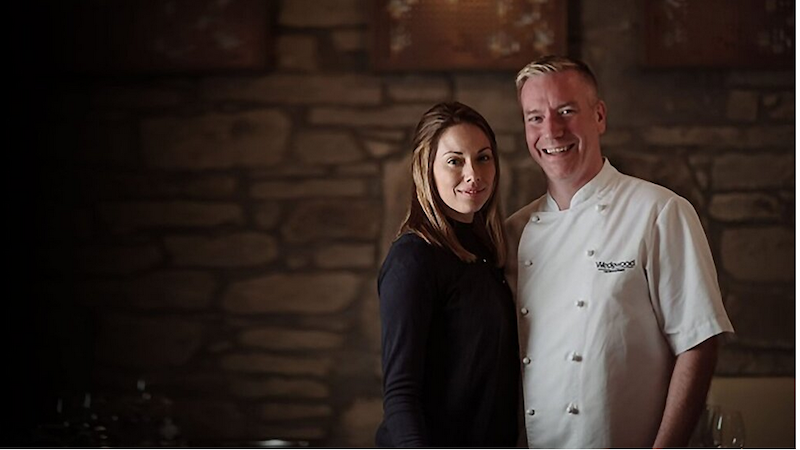
Who inspired you in your cooking career?
Paul Wedgwood’s love of cooking was deeply ingrained at an early age. His father was an excellent experimental home cook. Good food including game was always available, stimulating his interest in a career in cookery. Having qualified from Runshaw College in Leyland with a National Diploma in Hotel Management, Paul won a coveted placement at the renowned Miller Howe in Windermere. Under the inspirational guidance of chef patron John Tovey, whose sourcing of fresh, local ingredients – some grown in the hotel’s kitchen garden – made him a pioneer in this field. Paul successfully refined his skills, gaining him a full-time job in the kitchen. Later positions in Cumbria, culminating in his being part of the management team which opened The Georgina House in Kendal, greatly widened Paul’s appreciation of the hospitality industry. Thus, he was fully prepared to open his eponymous restaurant in Canongate along the Royal Mile in late 2007. Since then, it has won an array of local and national awards of which Harden’s is the most prized.
How do you explain the restaurant’s longevity of fourteen and a half years?
Paul and his partner Lisa have always responded consistently and positively to customer feedback, hoping to provide the “perfect night out” for their guests. Therefore, the restaurant has evolved, meeting the needs of an ever more demanding clientele who increasingly wish to know the finer details such as the provenance of the produce as well as how it is cooked.
How successful is the evening tasting menu?
About 65% to 70% of the evening covers opt for the tasting menu. It used to be only 25% to 30% when the a la carte menu was longer and shown first to the guests. A strategic decision, partly in response to customer feedback, was taken to shorten the carte, which had satisfied most preferences but was admittedly too long, and present the tasting menu first. Eventually, this more than doubled the uptake.
Tell us about your kitchen and front of house teams.
There are nine in the kitchen, three of whom are part time. Given the long hours, they now work a four-day week to promote an improved work-life balance. This has encouraged some chefs to return to work at Wedgwood. There are four full time and two part time front of house members.
Tell us about your interest in foraging
Paul has been a keen forager since his boy scout days. He has included foraged ingredients in his menus since opening, being a pioneer of foraging before it became fashionable.
Do you have a signature dish?
Paul is very proud of his scallops with cauliflower korma puree, pineapple and capers relish, peanut and pistachio dust dressed with micro coriander and its oil. Customers are advised to taste all the elements together to enjoy the harmony of flavours before eating them separately. This hugely popular dish is rarely off the menu before an outcry brings it back
What changes have you noted in the Edinburgh restaurant scene in recent years.
The rise of independent restaurants has been crucial in raising standards and responding to a more educated and demanding clientele. Indeed, they need to be ahead of the game in a constantly evolving gastronomy stimulated by TV chefs. Edinburgh’s thriving tourist industry and its strong gastronomic reputation will ensure a healthy coexistence amongst competing restaurants



